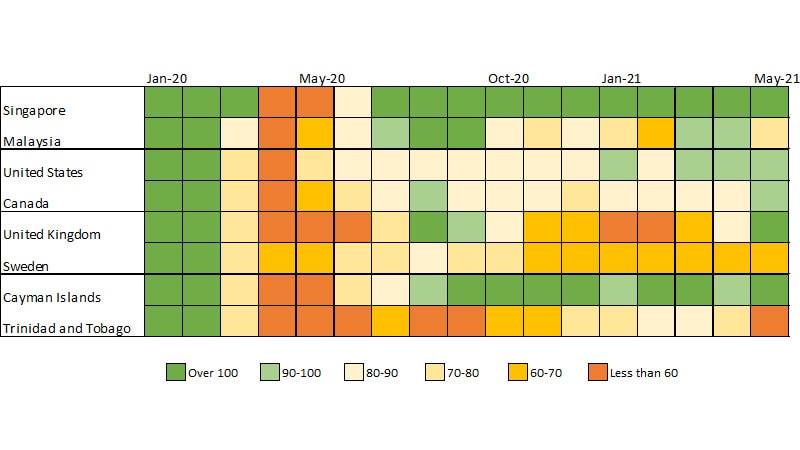More balanced growth fosters a more sustainable and enduring recovery
At first glance, the data suggests that vaccination does not really add much in terms of spending momentum. After all, those counties that were least vaccinated had stronger spending momentum, both in January and in April, than their counterparts with higher vaccination rates. But this simple reading of the data misses two important points.
First, the gains between May and January in spending momentum were five times stronger³ in U.S. counties where over 40 percent of the population was fully vaccinated than those with less than a 25 percent vaccination rate at the end of May 2021. Vaccination has advanced faster in large urban counties in California, New York and New Jersey—where spending momentum was weaker for most of 2020. In contrast, rural counties in Georgia, Virginia and Texas have been slower to vaccinate and their spending momentum gains have been more modest. In short, the outsized gains in vaccinated regions are currently driving the national recovery more than the less vaccinated areas are.
Second, vaccination clearly has helped speed the economic recovery, once state-level differences are taken into account.⁴ Illinois and Indiana help to illustrate this point. SMI readings for the neighboring states were close to the national average in May. State-level results in May would suggest Illinois—where a larger share of population was fully vaccinated than Indiana (40 percent versus 36 percent)—had not seen any benefit. However, this view does not control for the fact that Indiana’s policies were less restrictive and consumer spending was thus not as affected prior to the vaccine rollout. According to the SMI readings at a county level within states, there is a strong positive correlation in the economic recovery to vaccination rates. Even within Indiana, counties that were able to achieve higher vaccination rates accelerated in spending growth relative to pre-pandemic 2019.
With every 10 percentage-point increase in fully vaccinated people as a share of the total, county-level SMIs rose by 1.4, controlling for state-level differences. This suggests that vaccination rates may have contributed up to 4 percentage points to nominal personal consumption expenditure growth nationally, with a more pronounced affect on spending at restaurants and gasoline stations.
